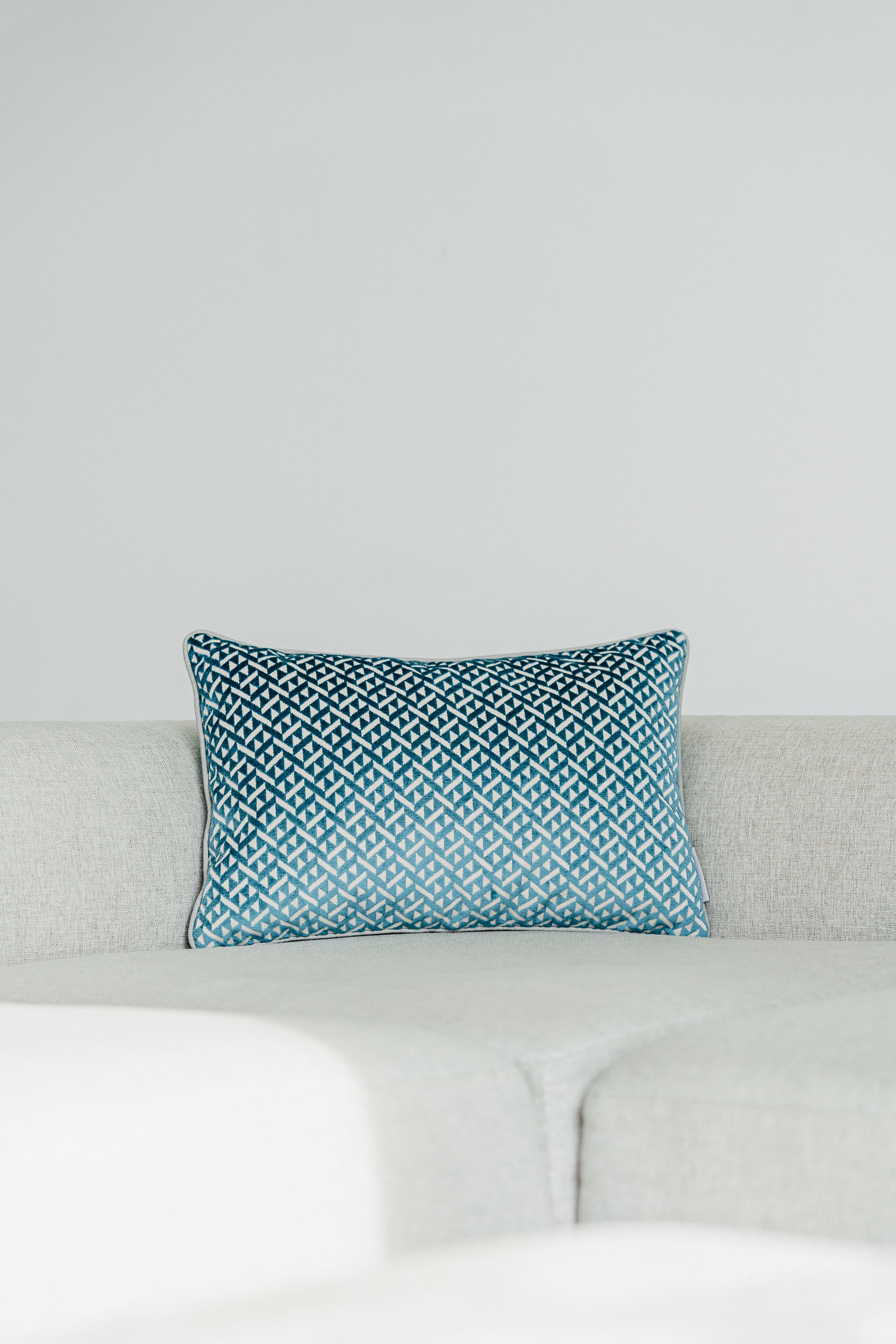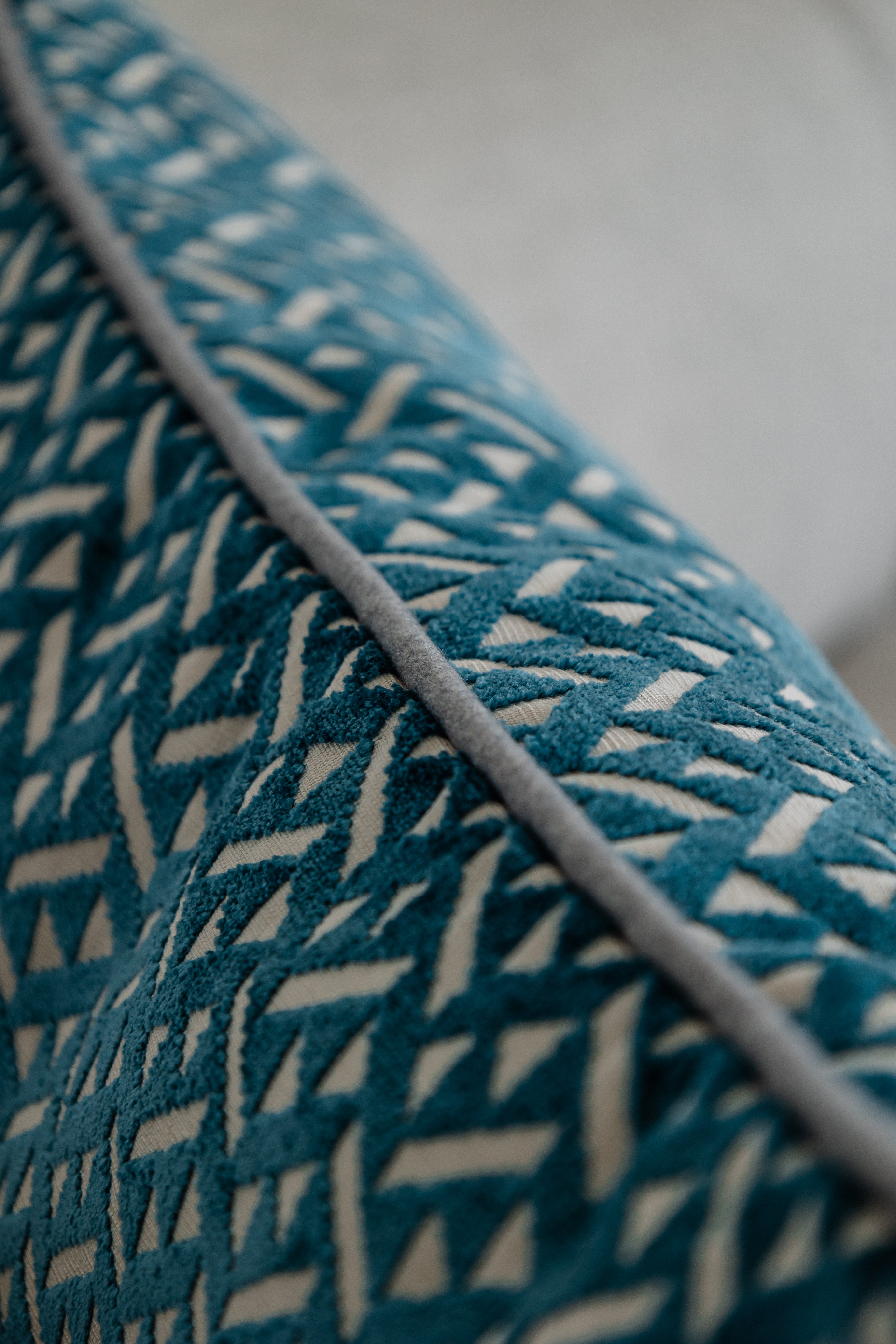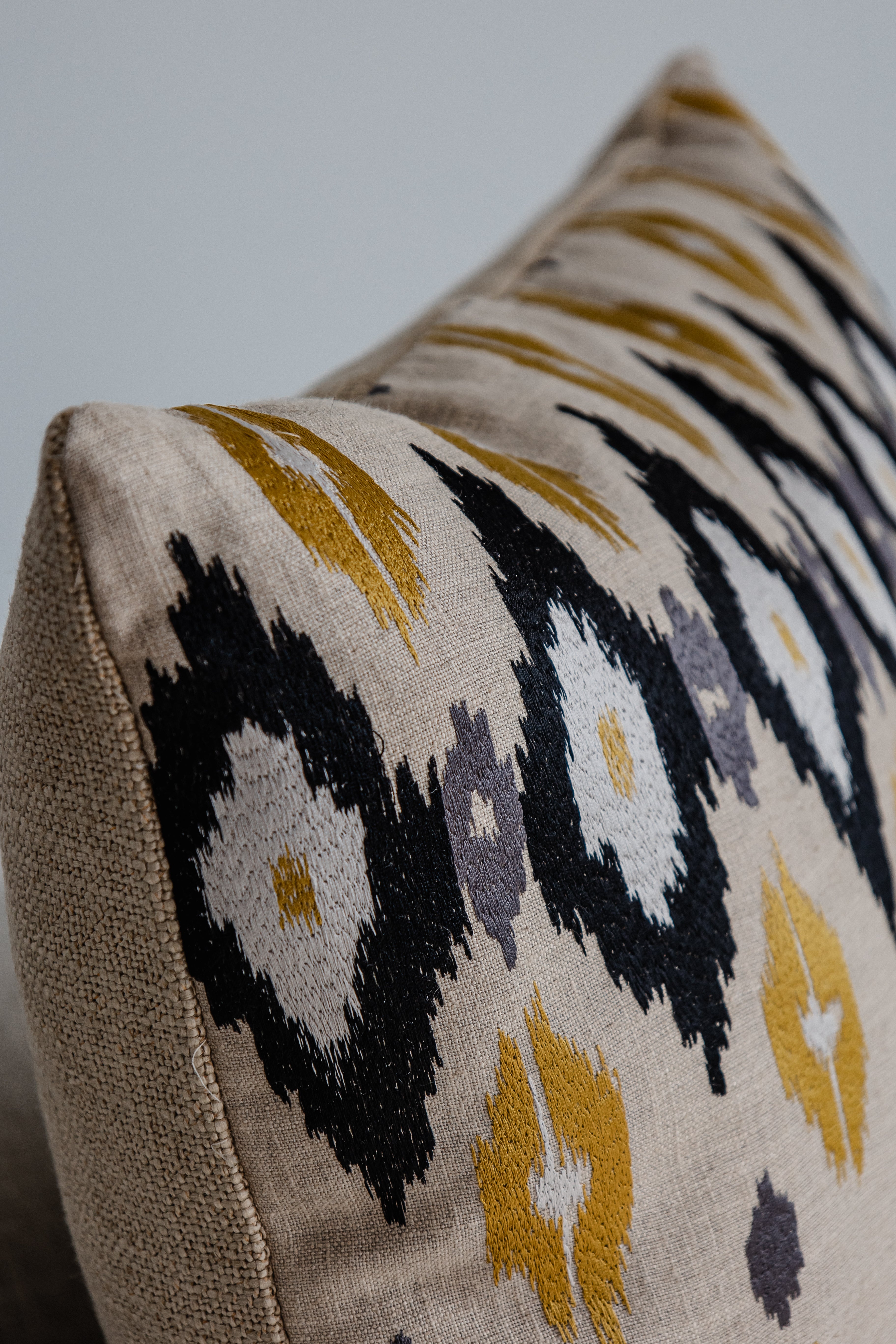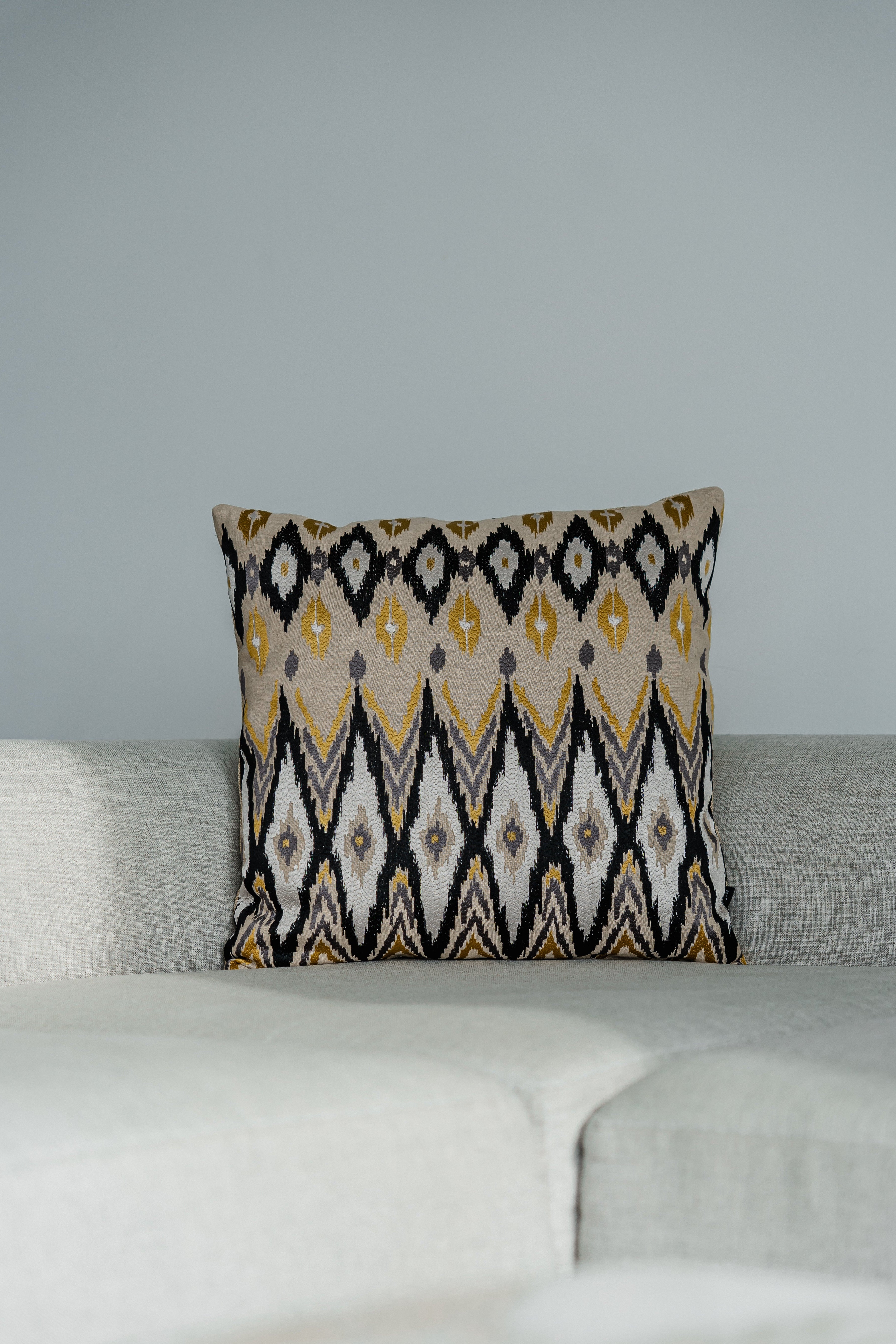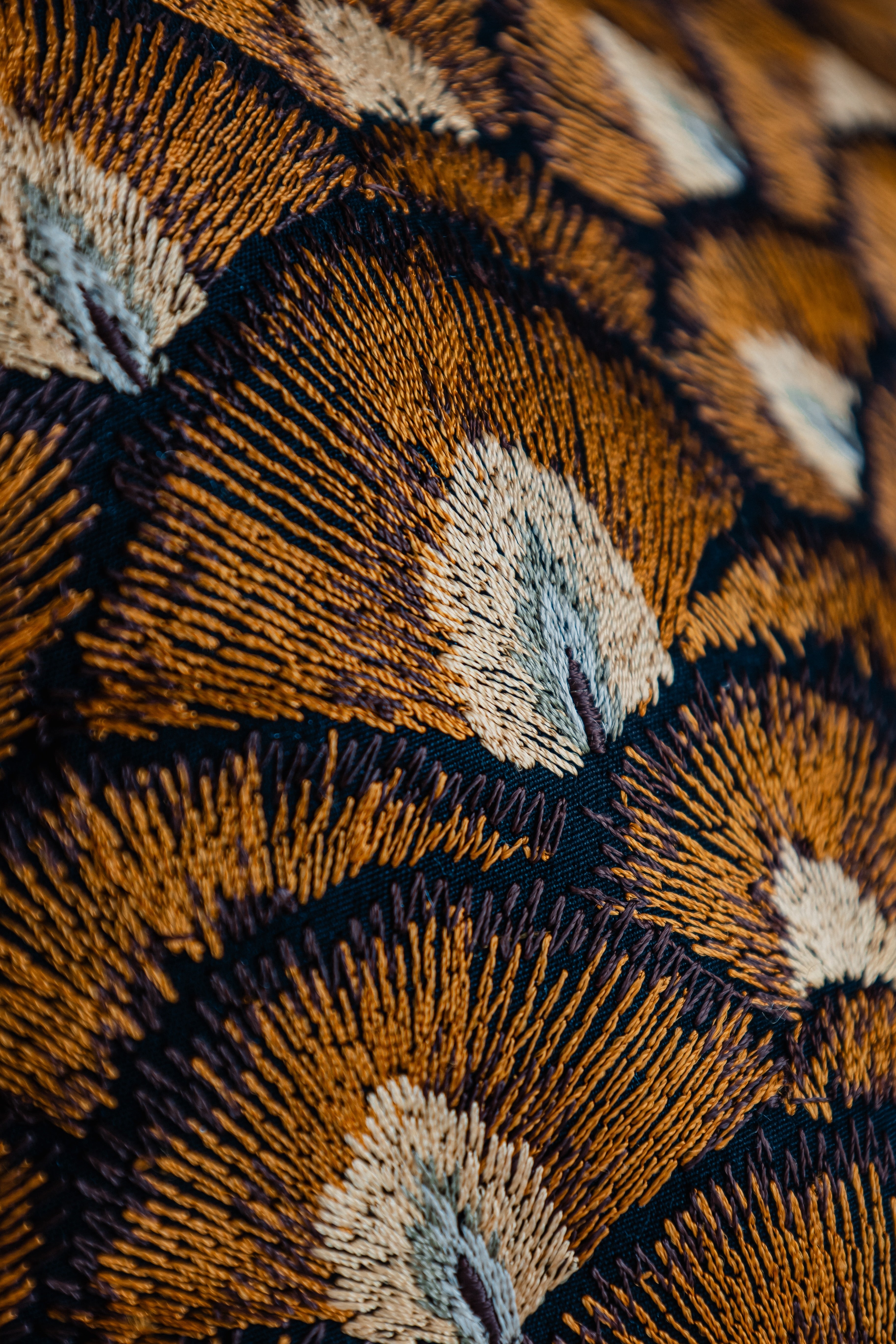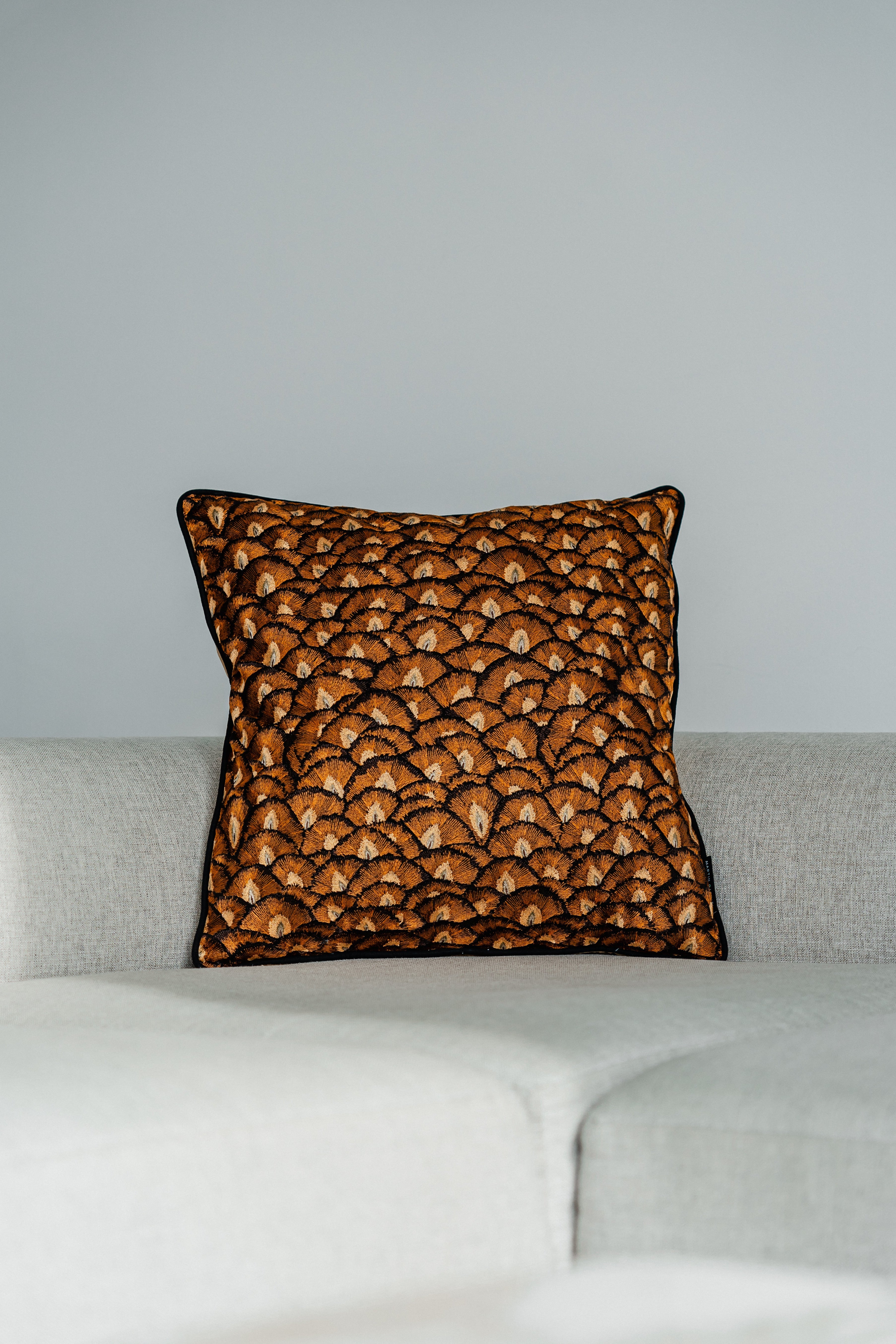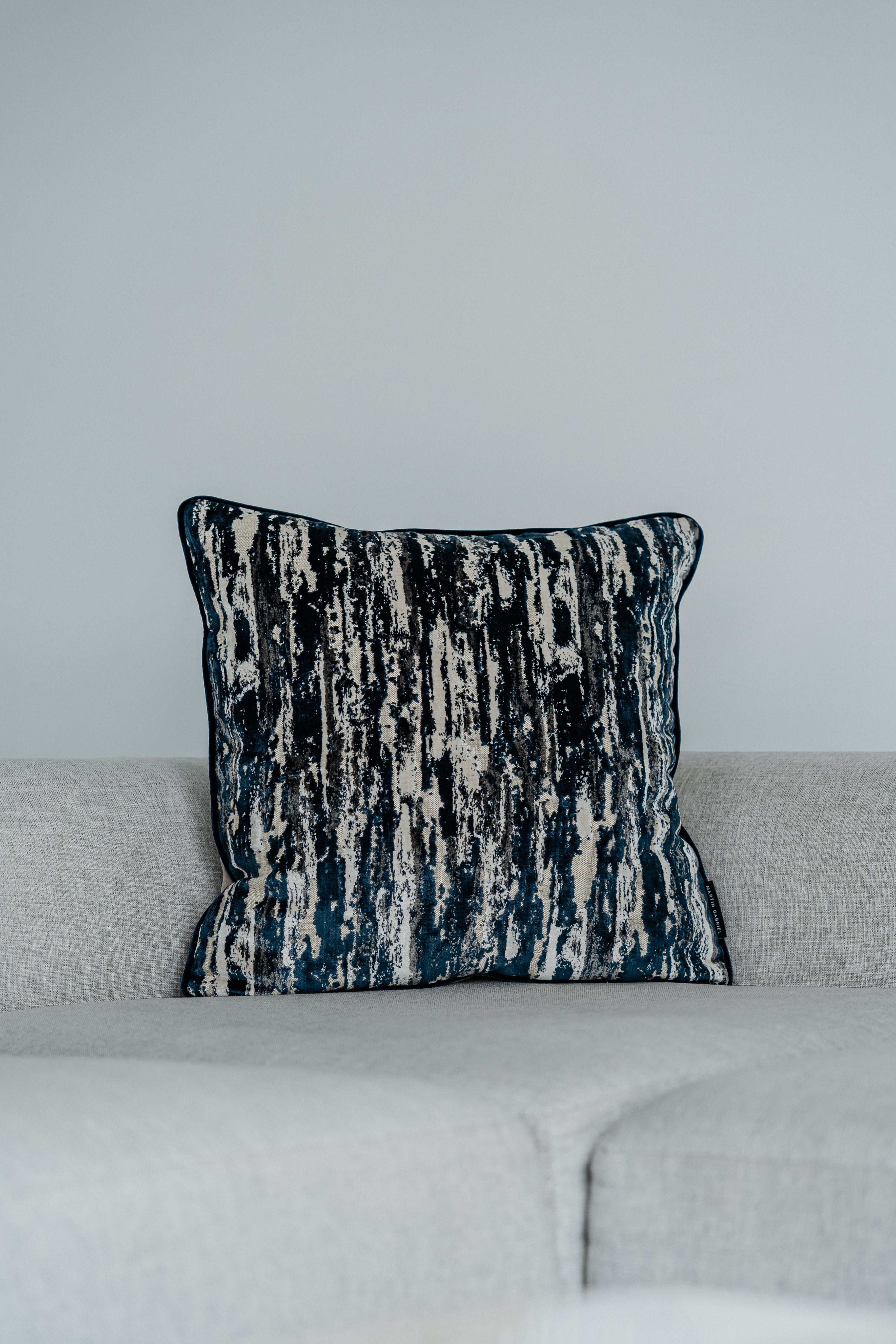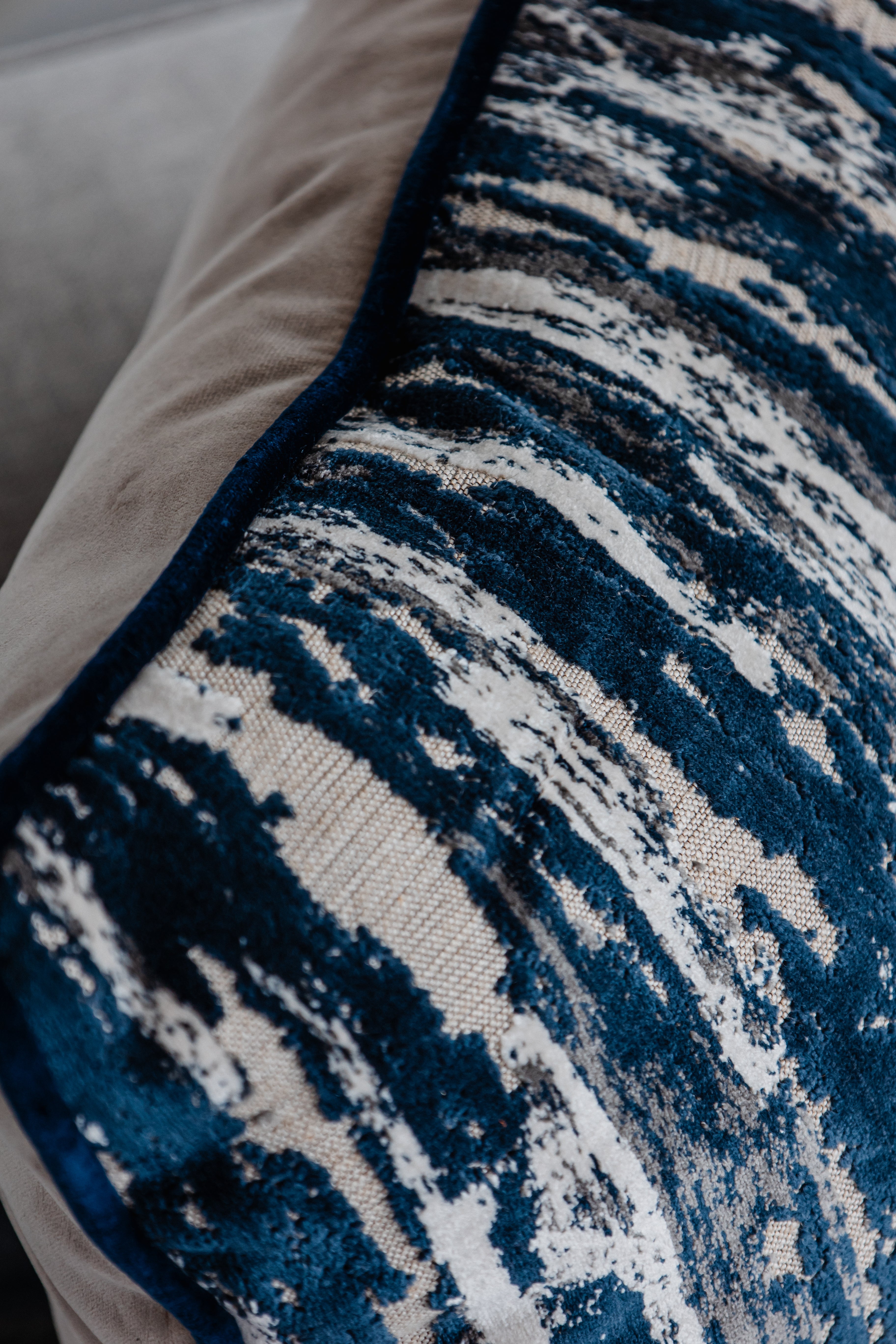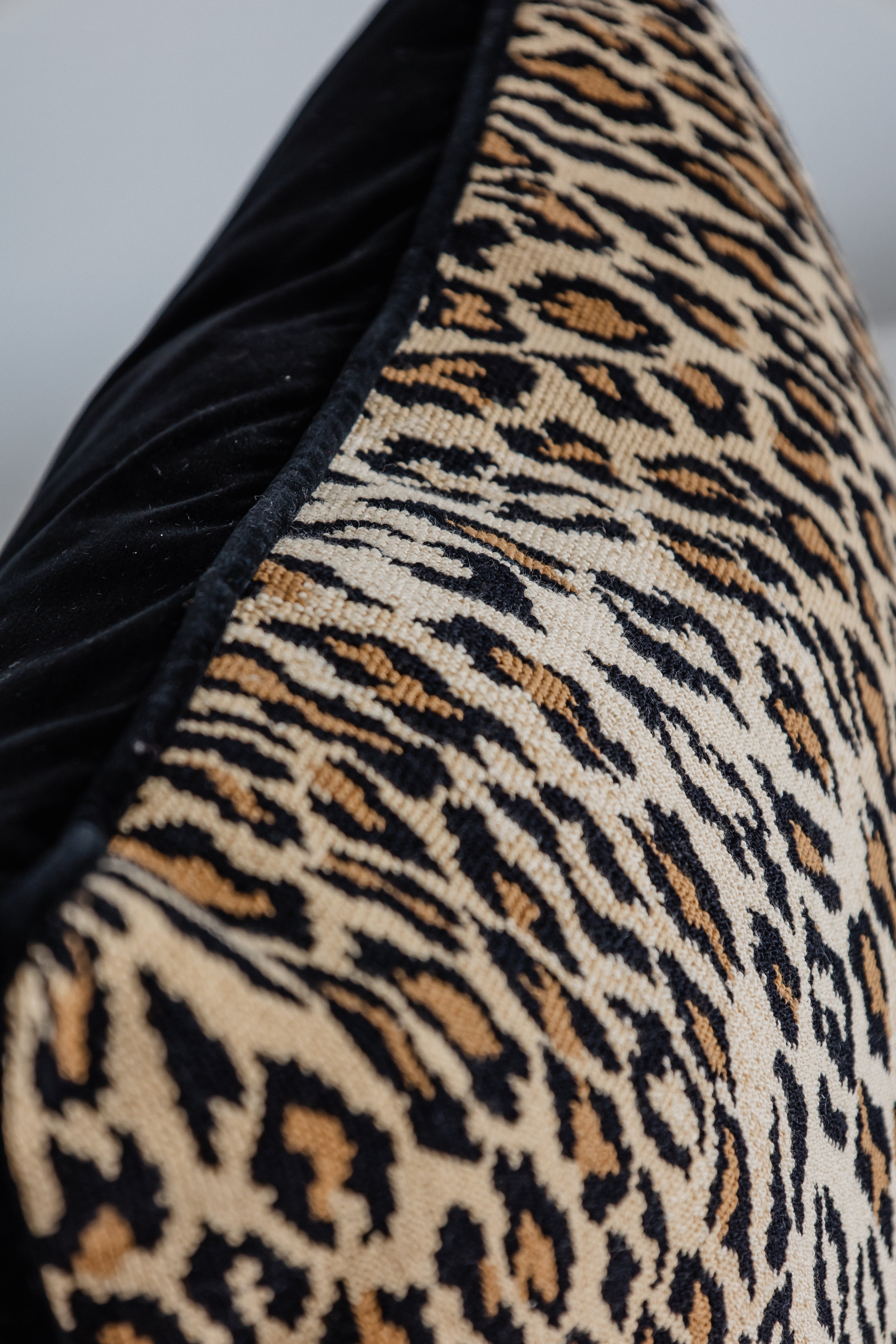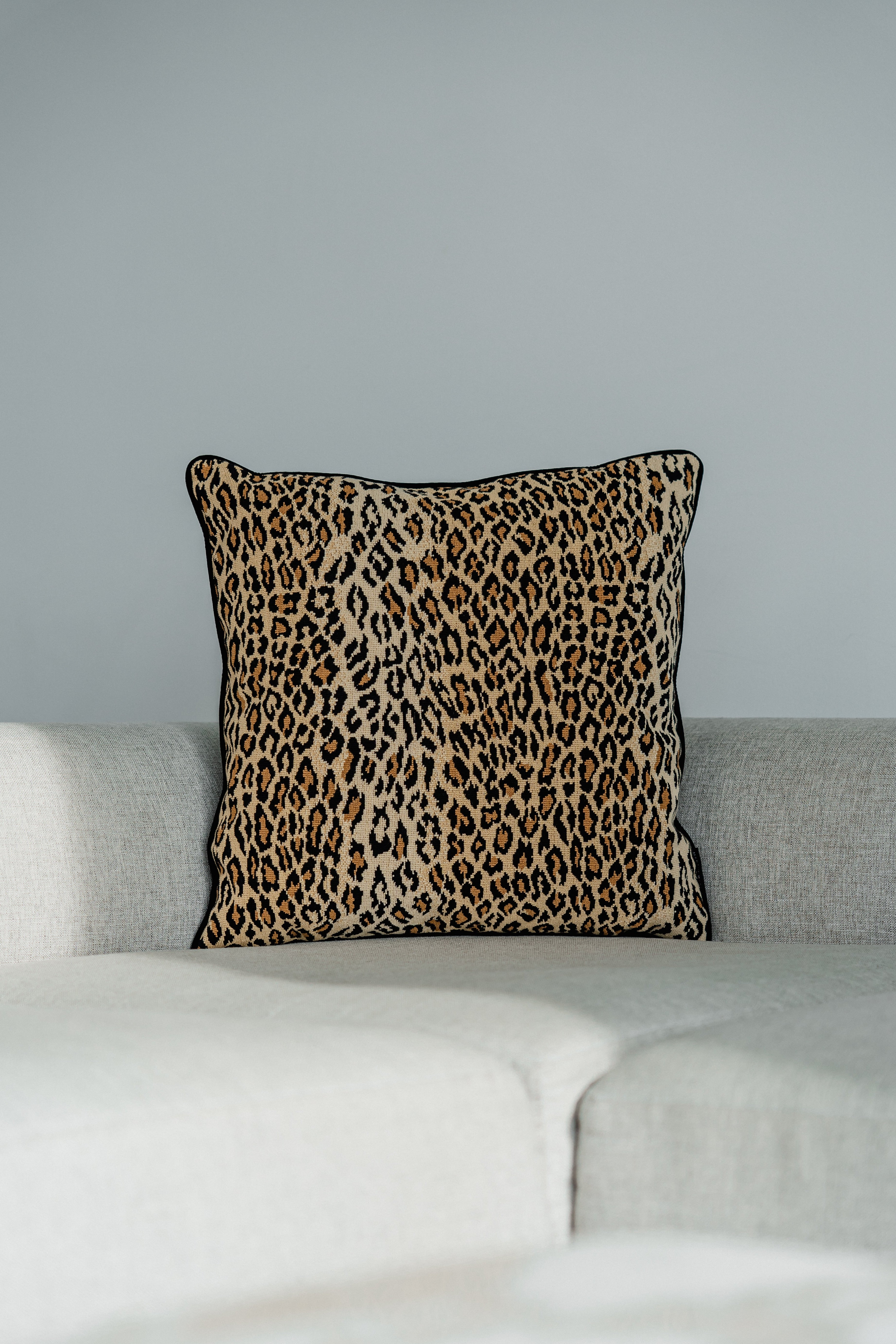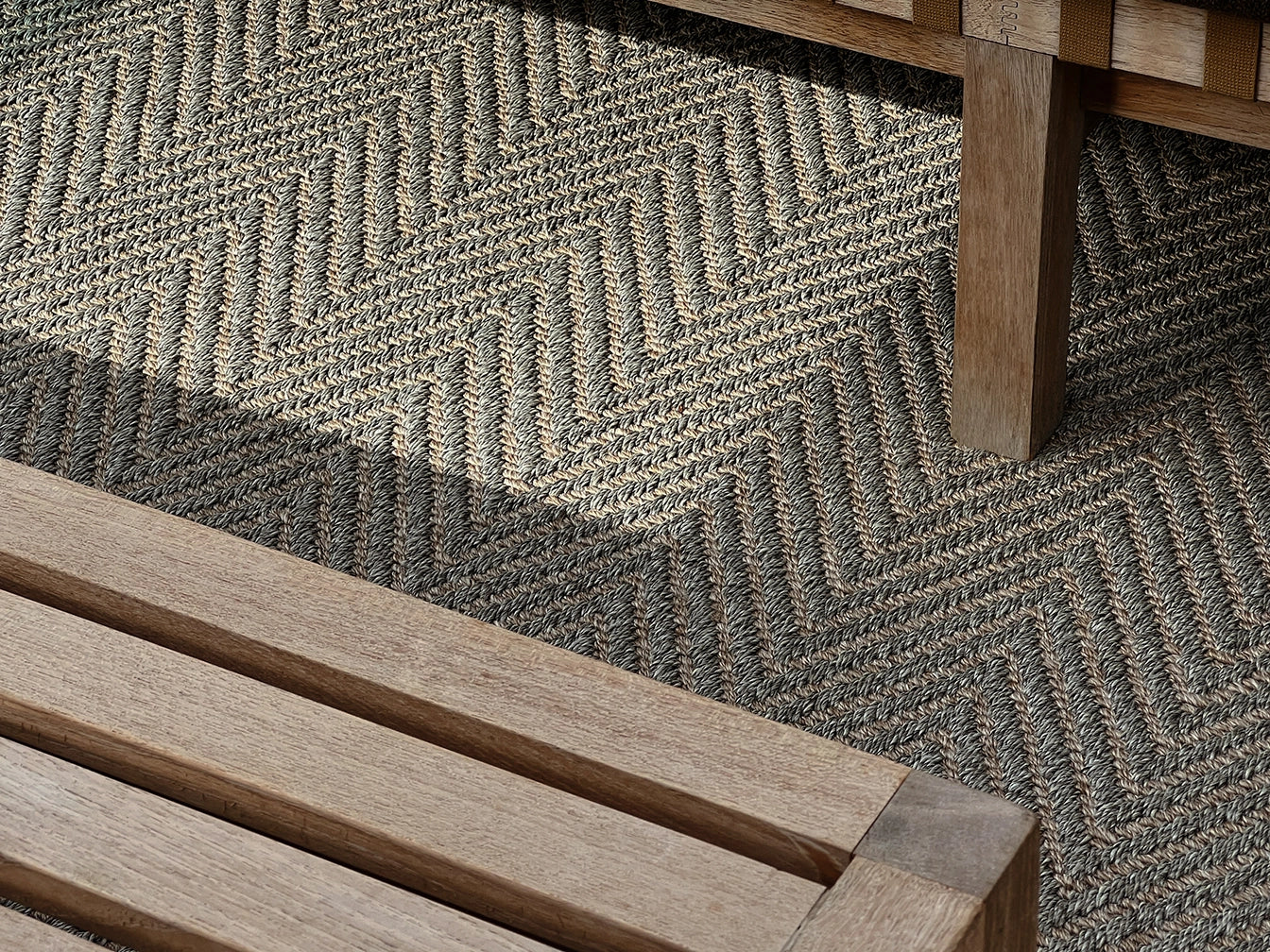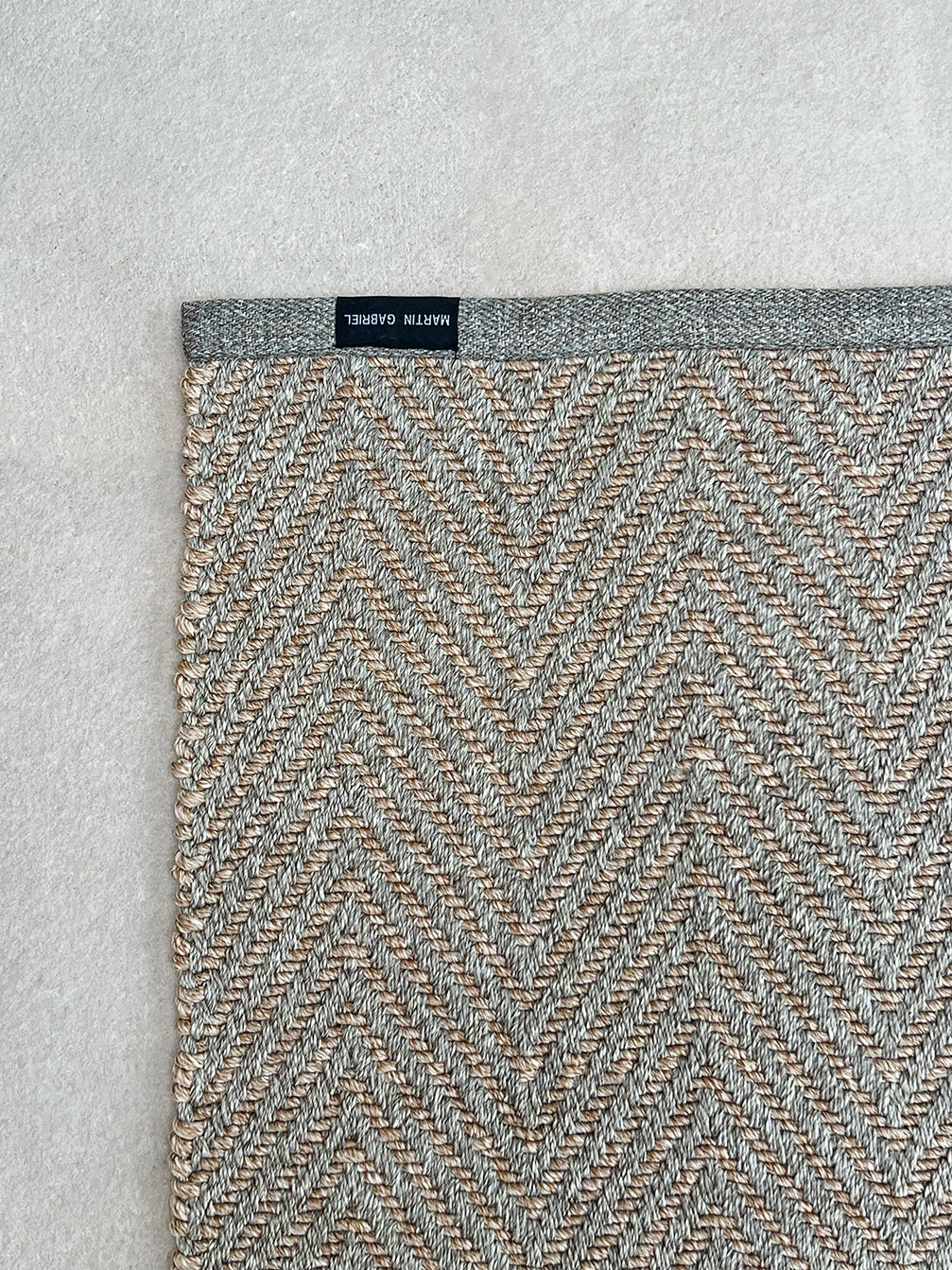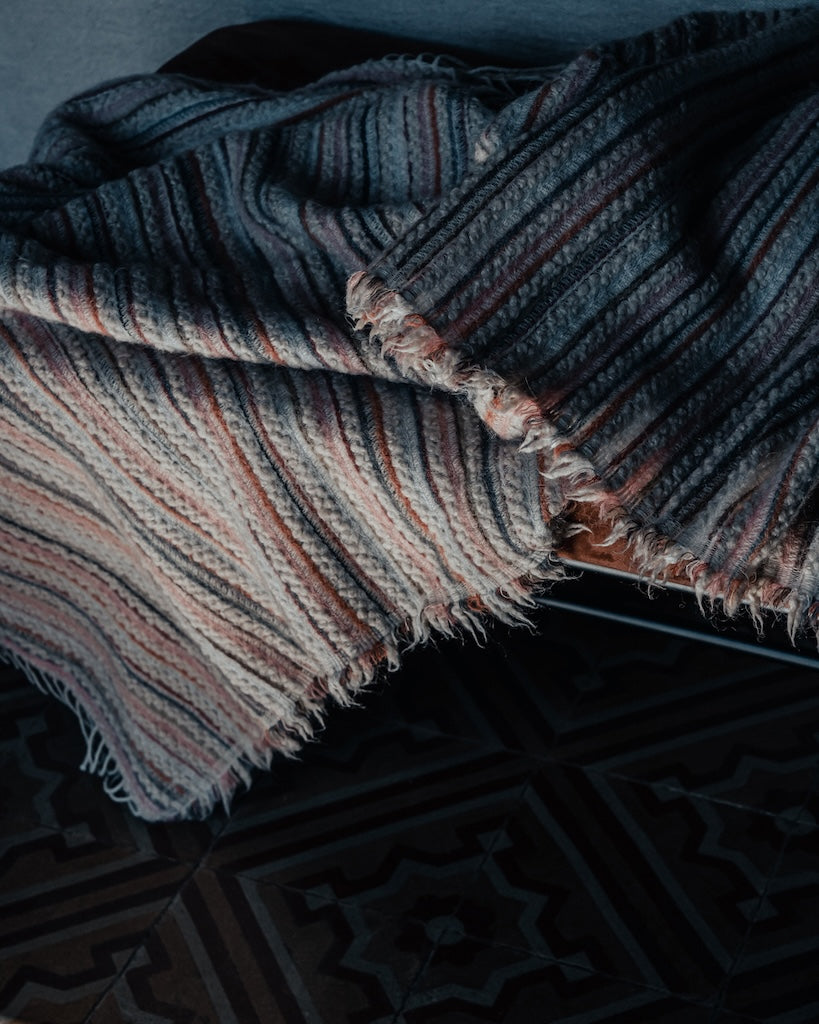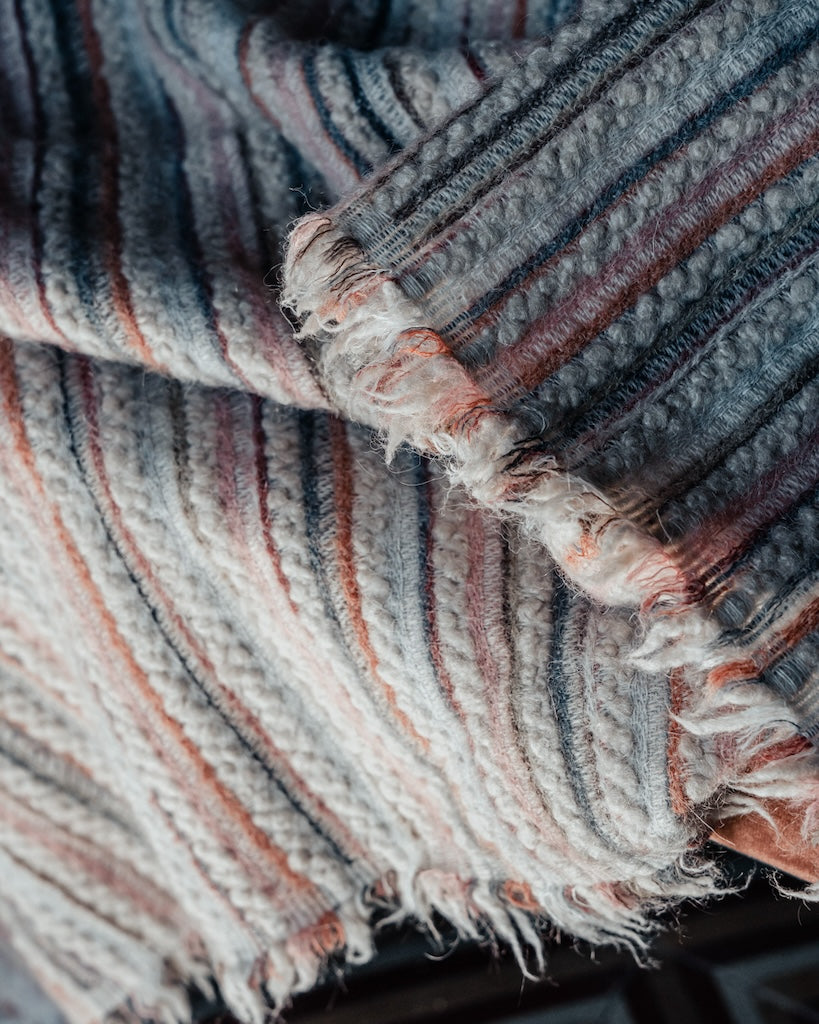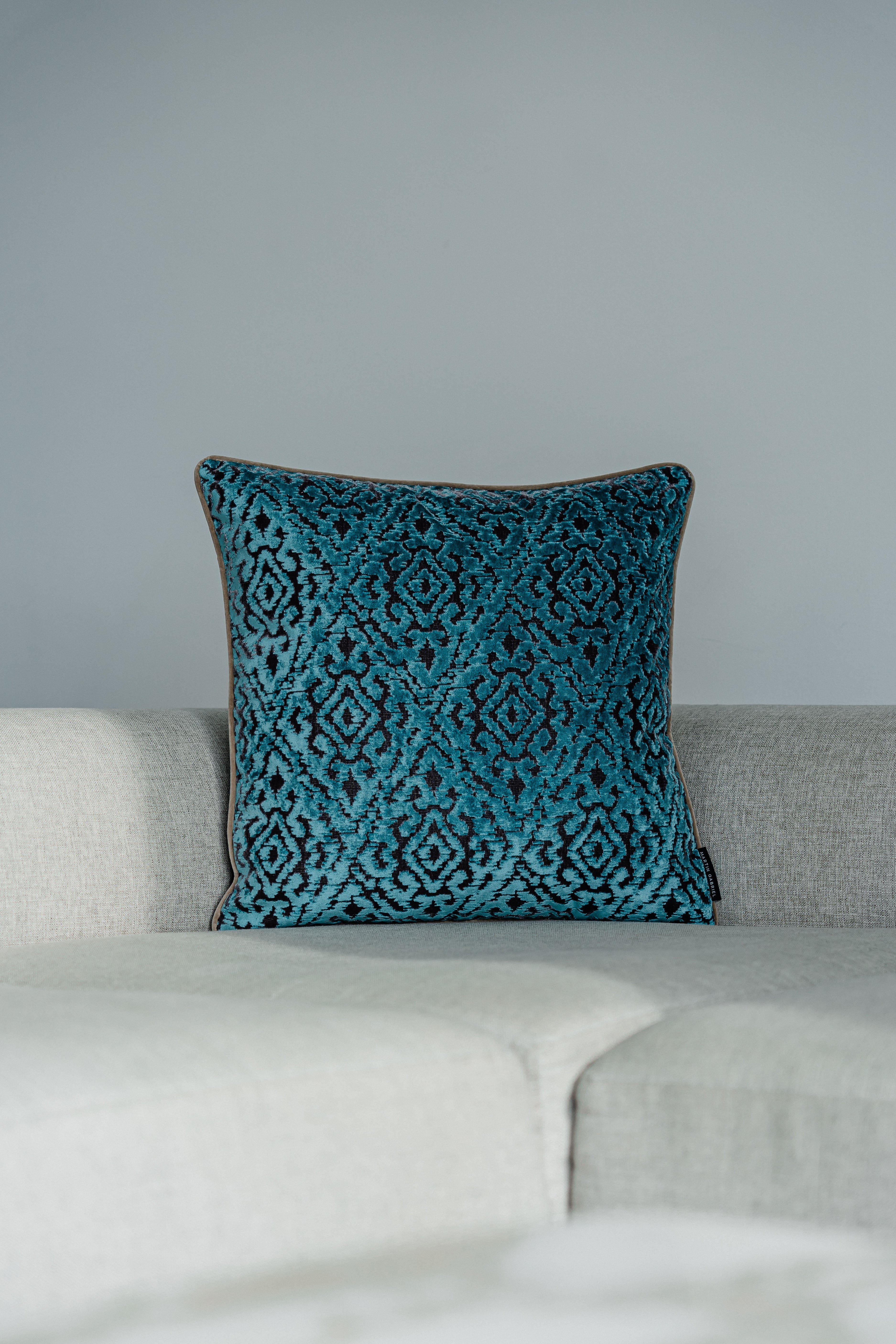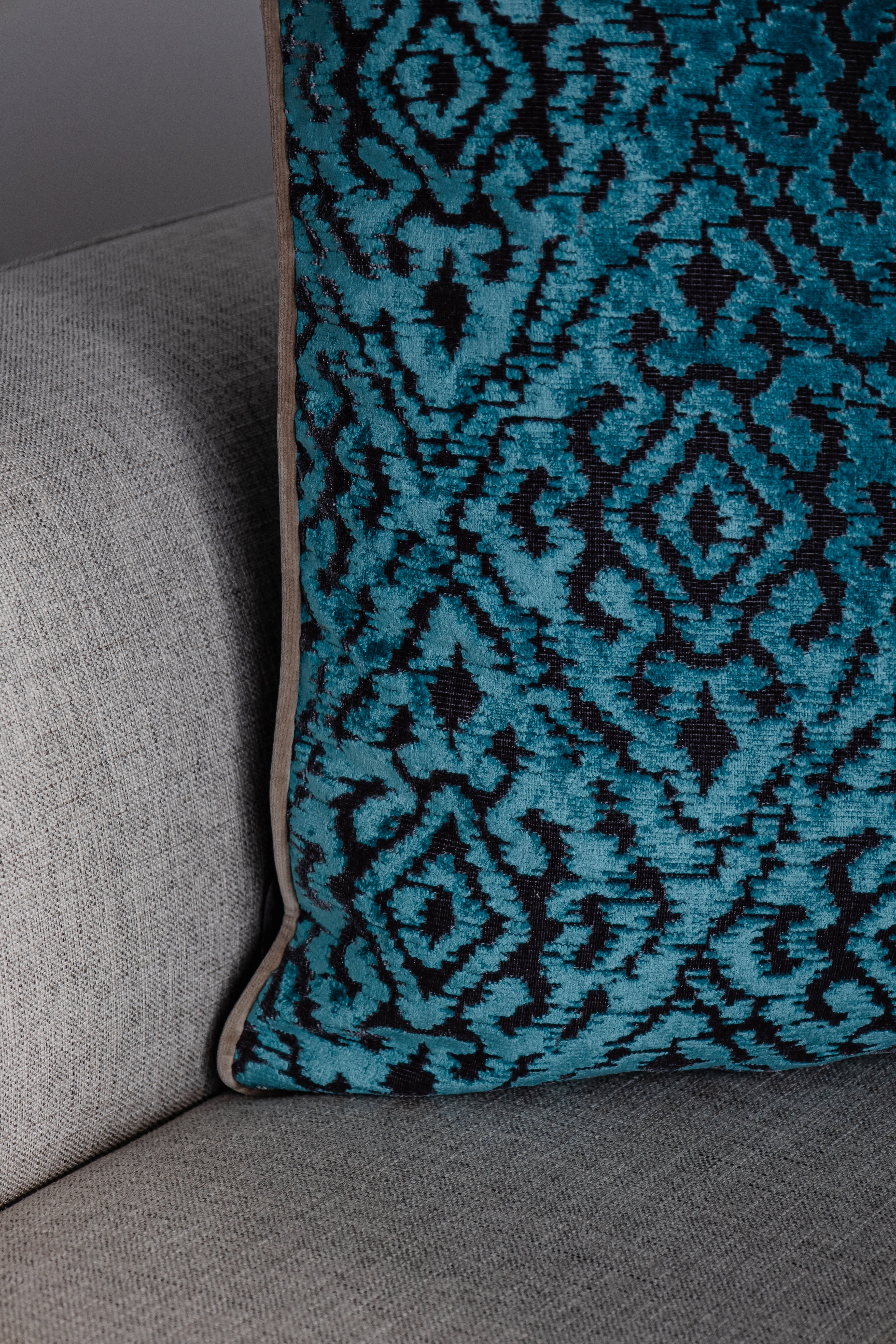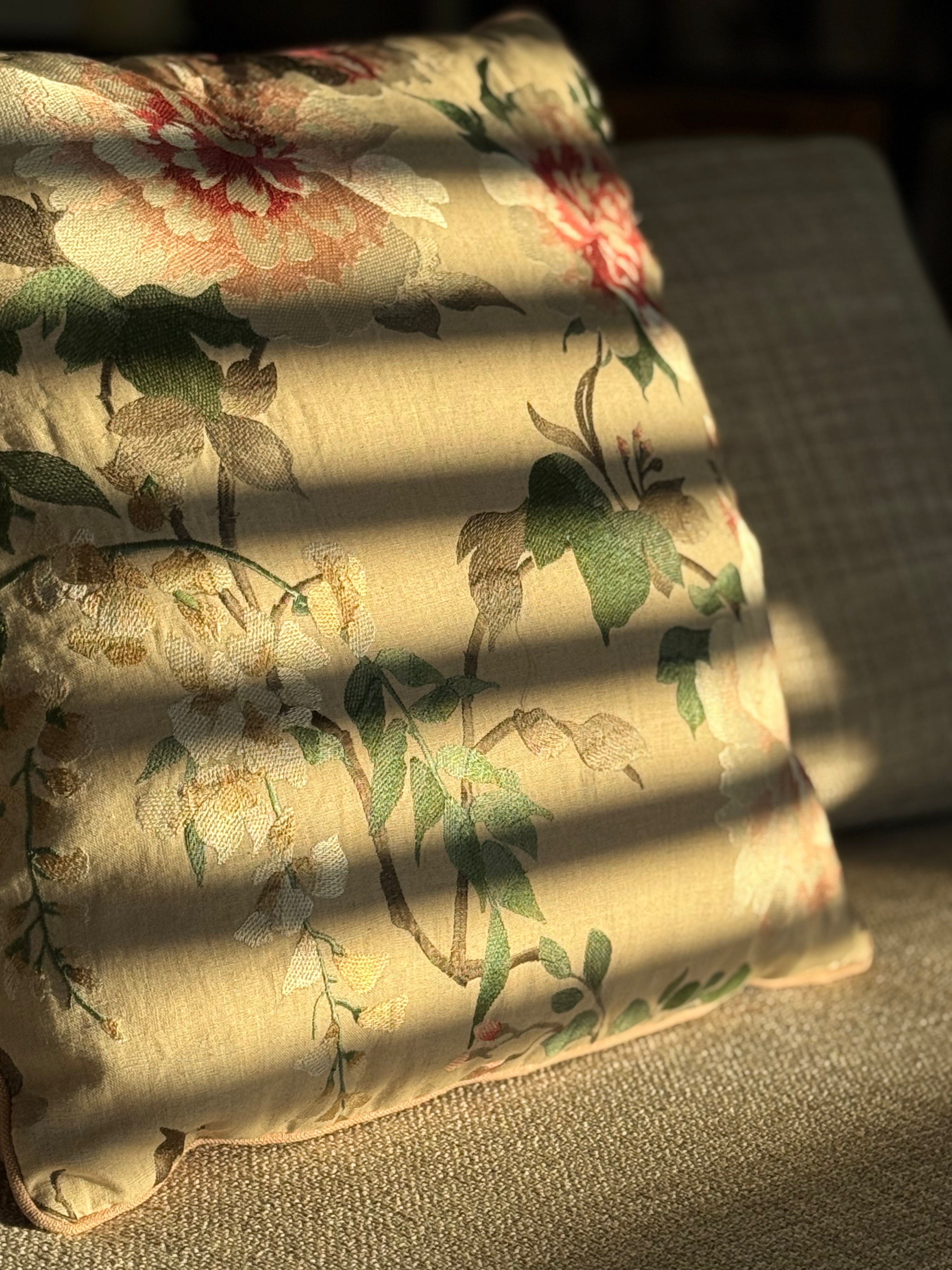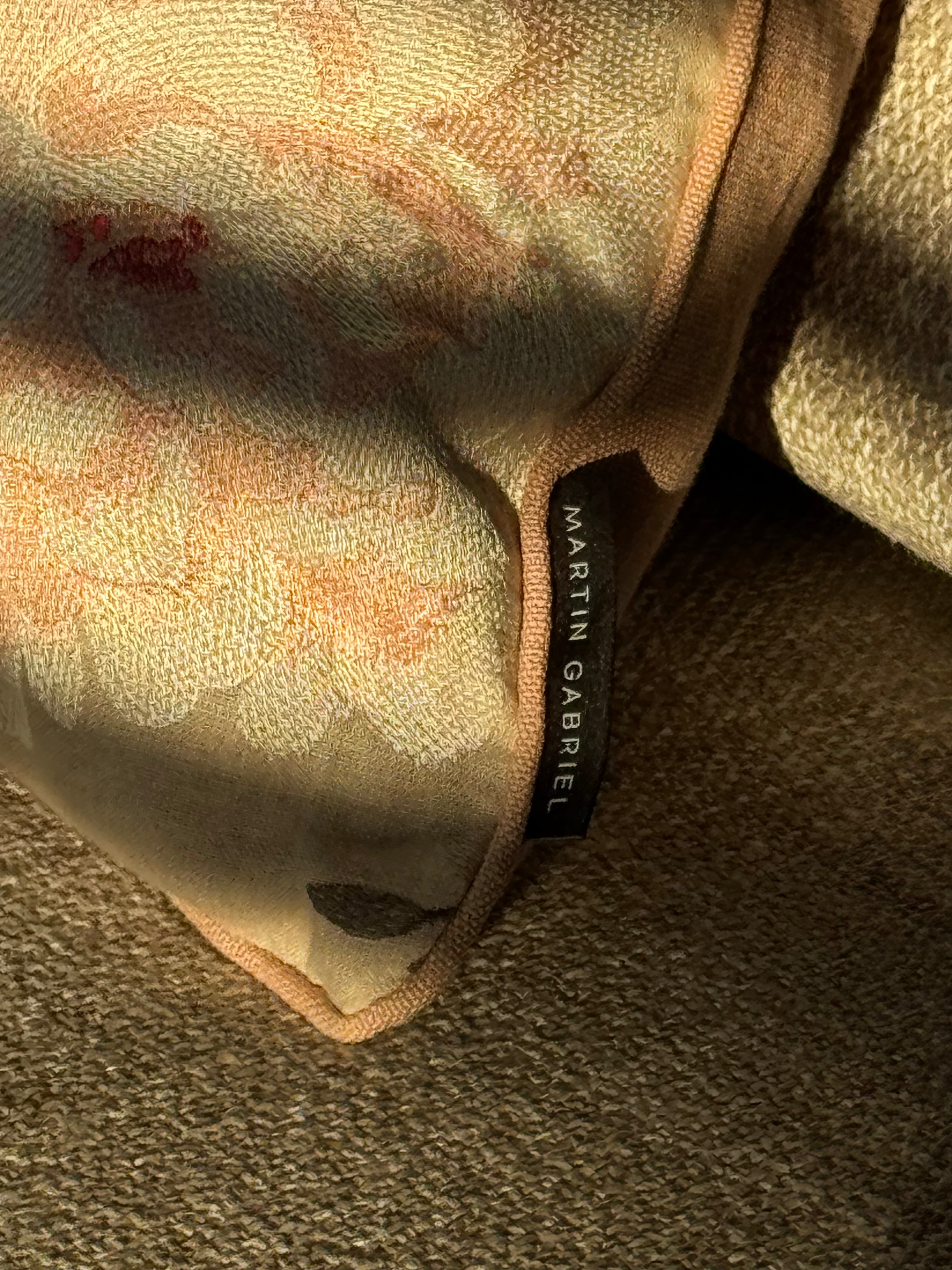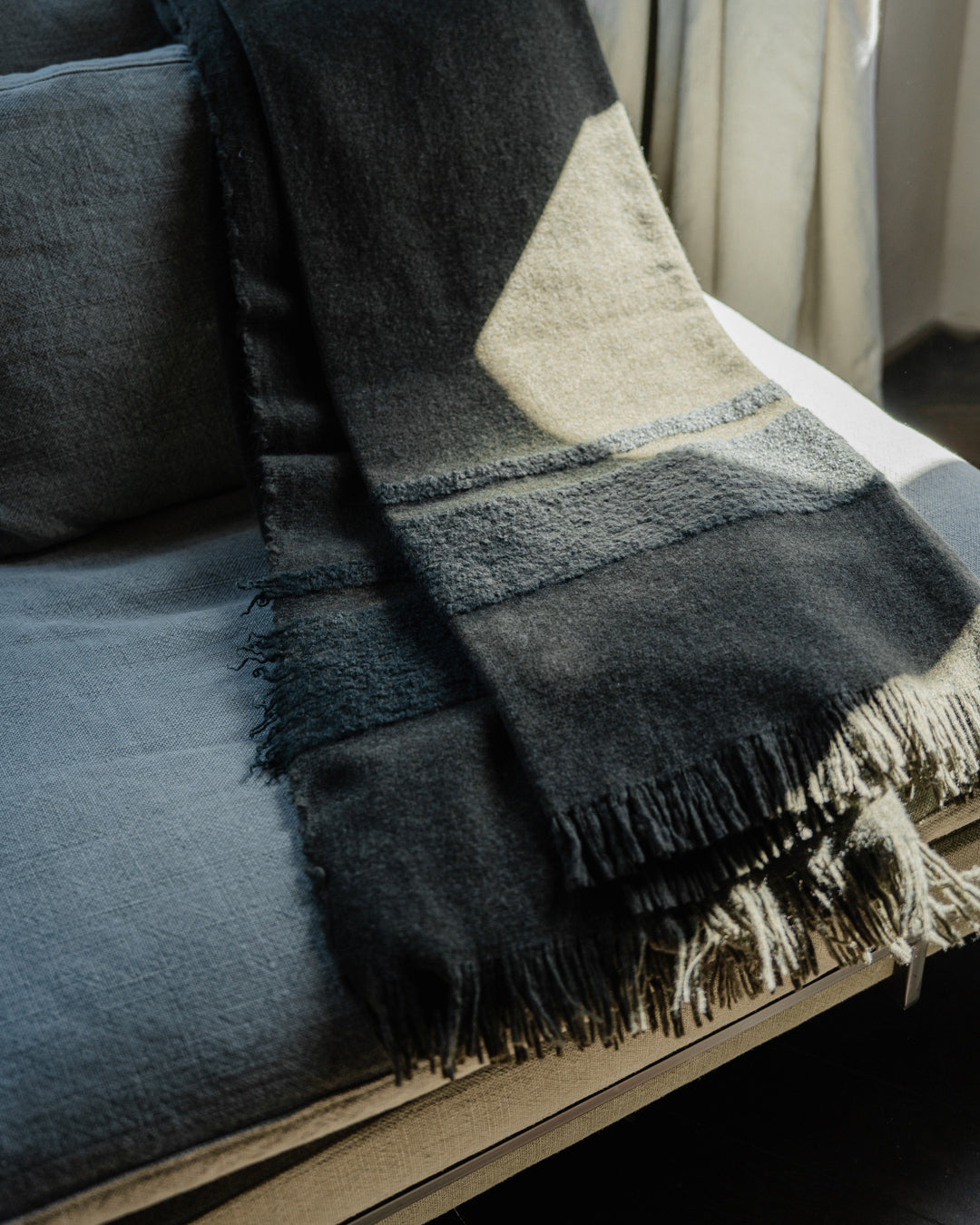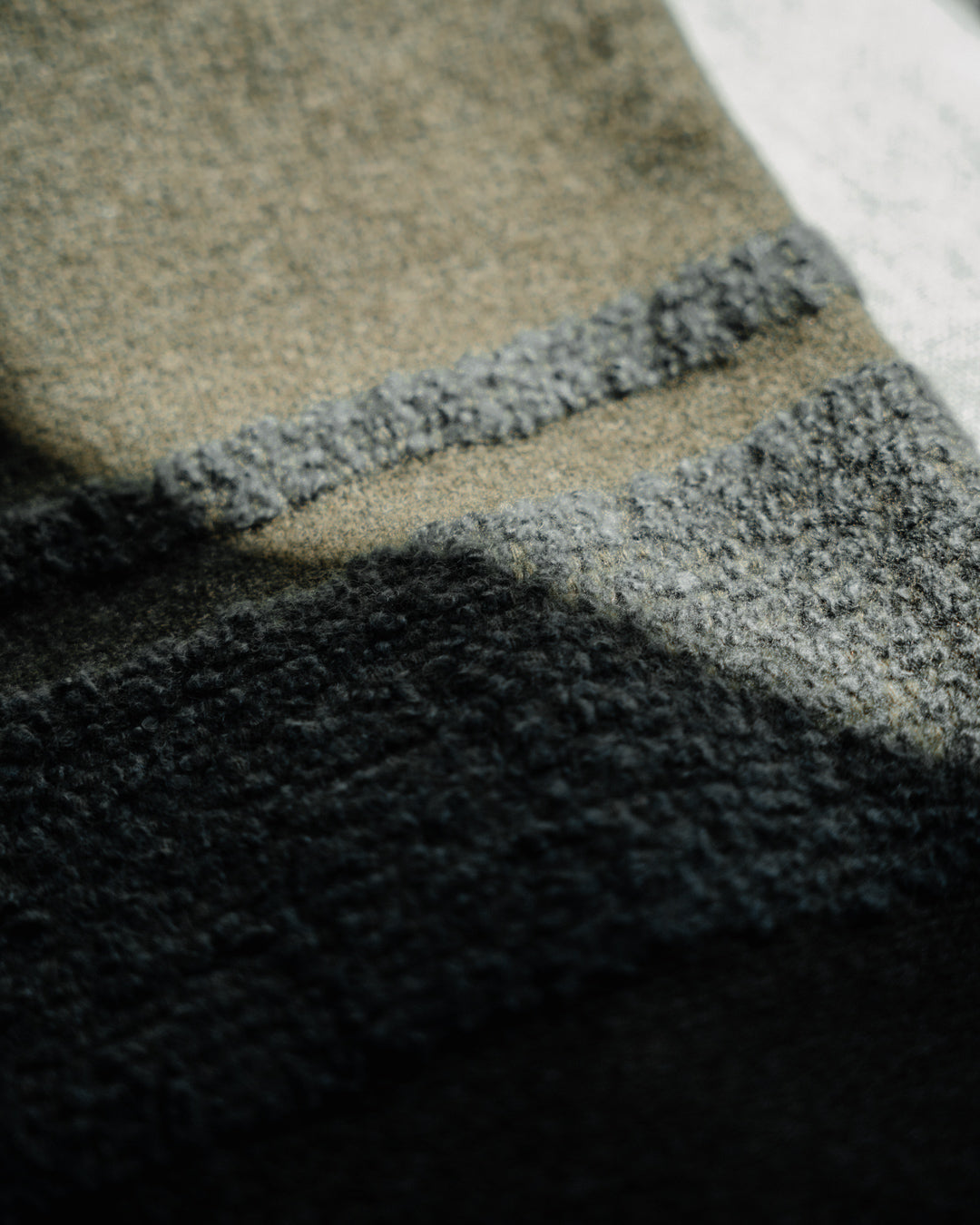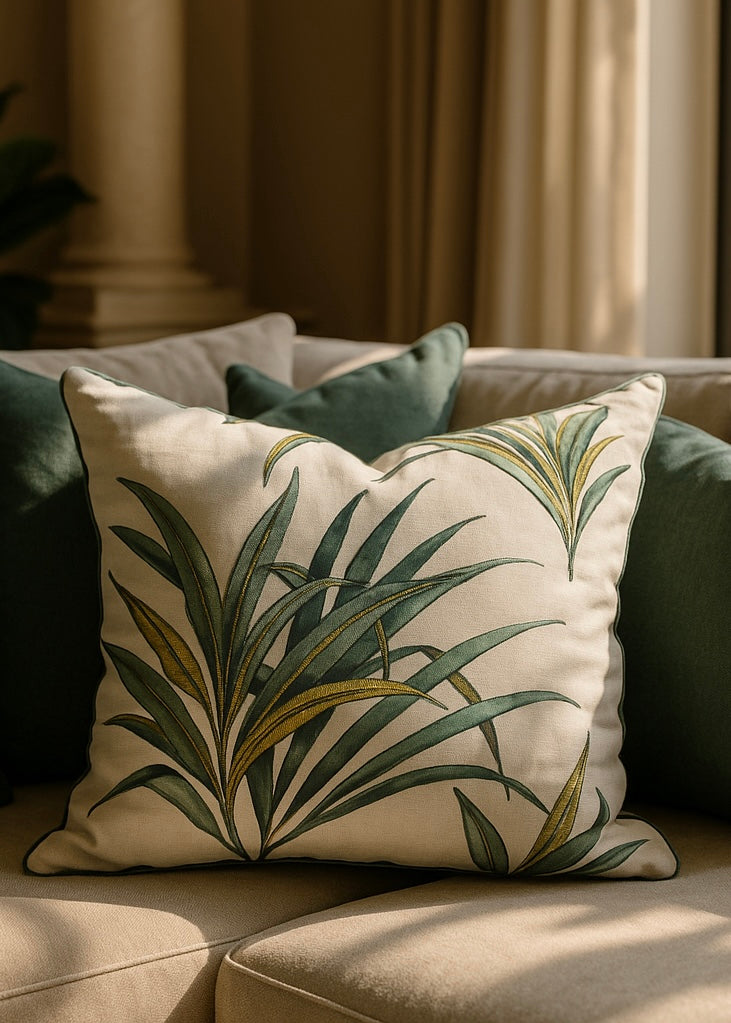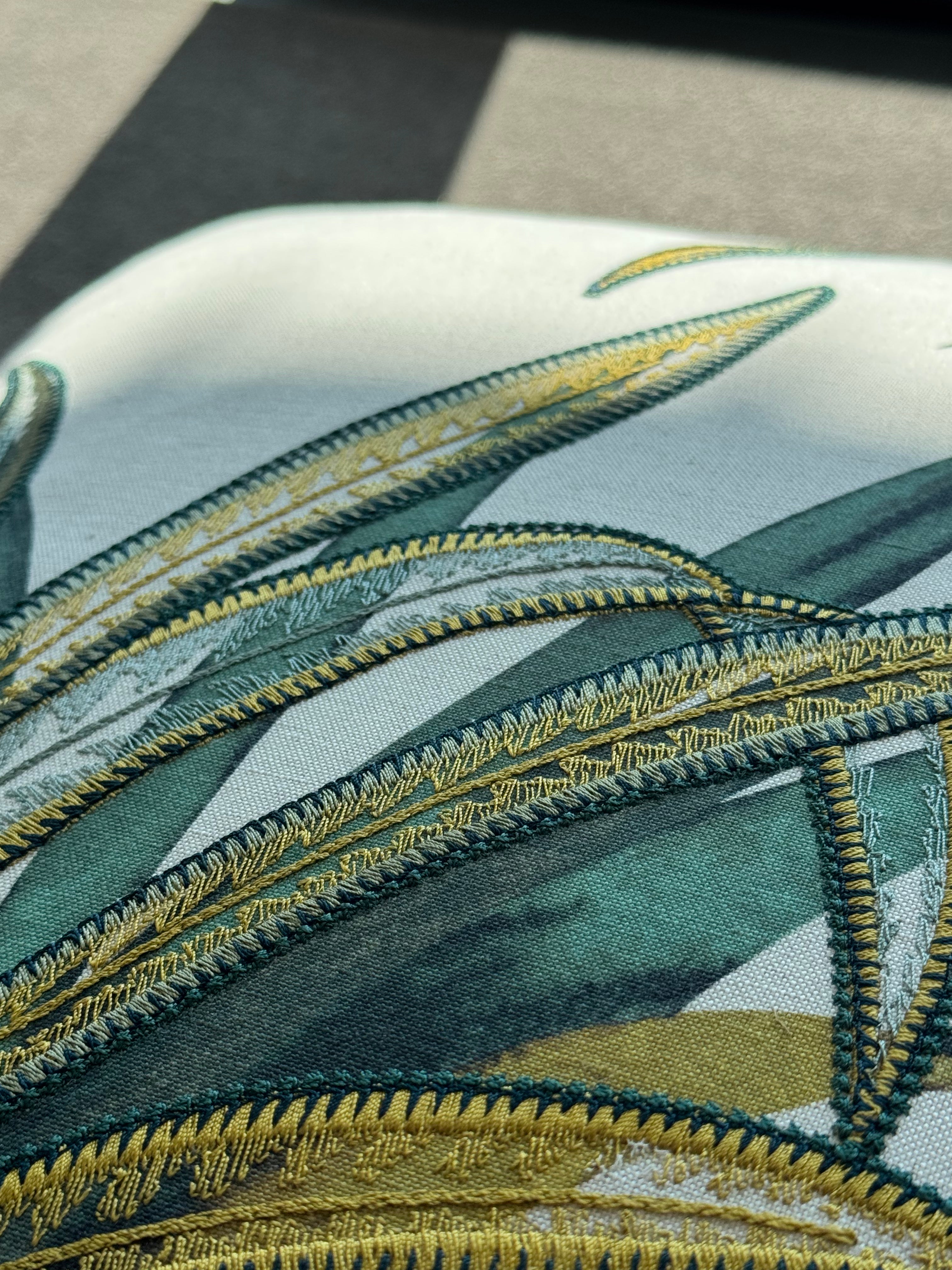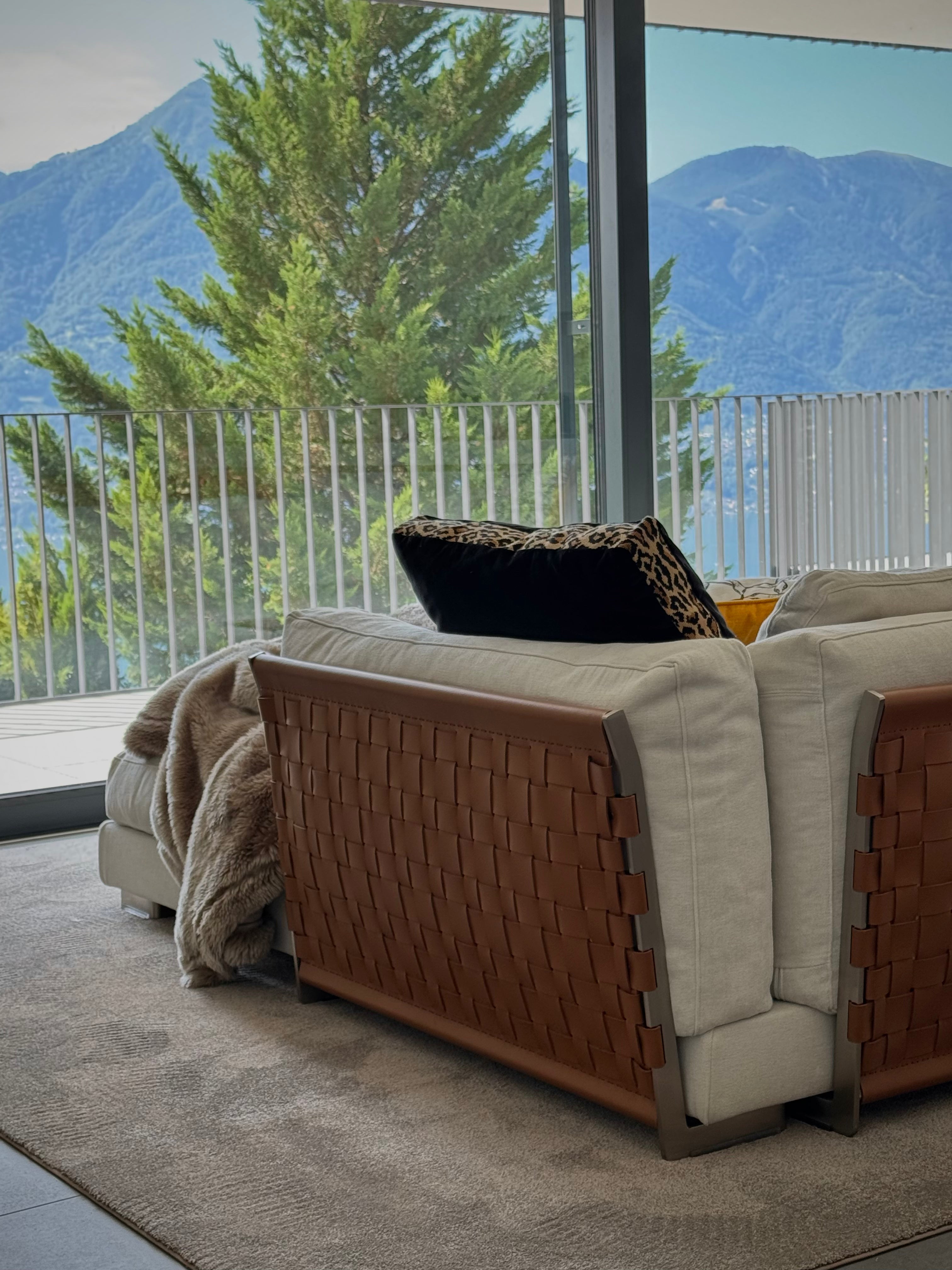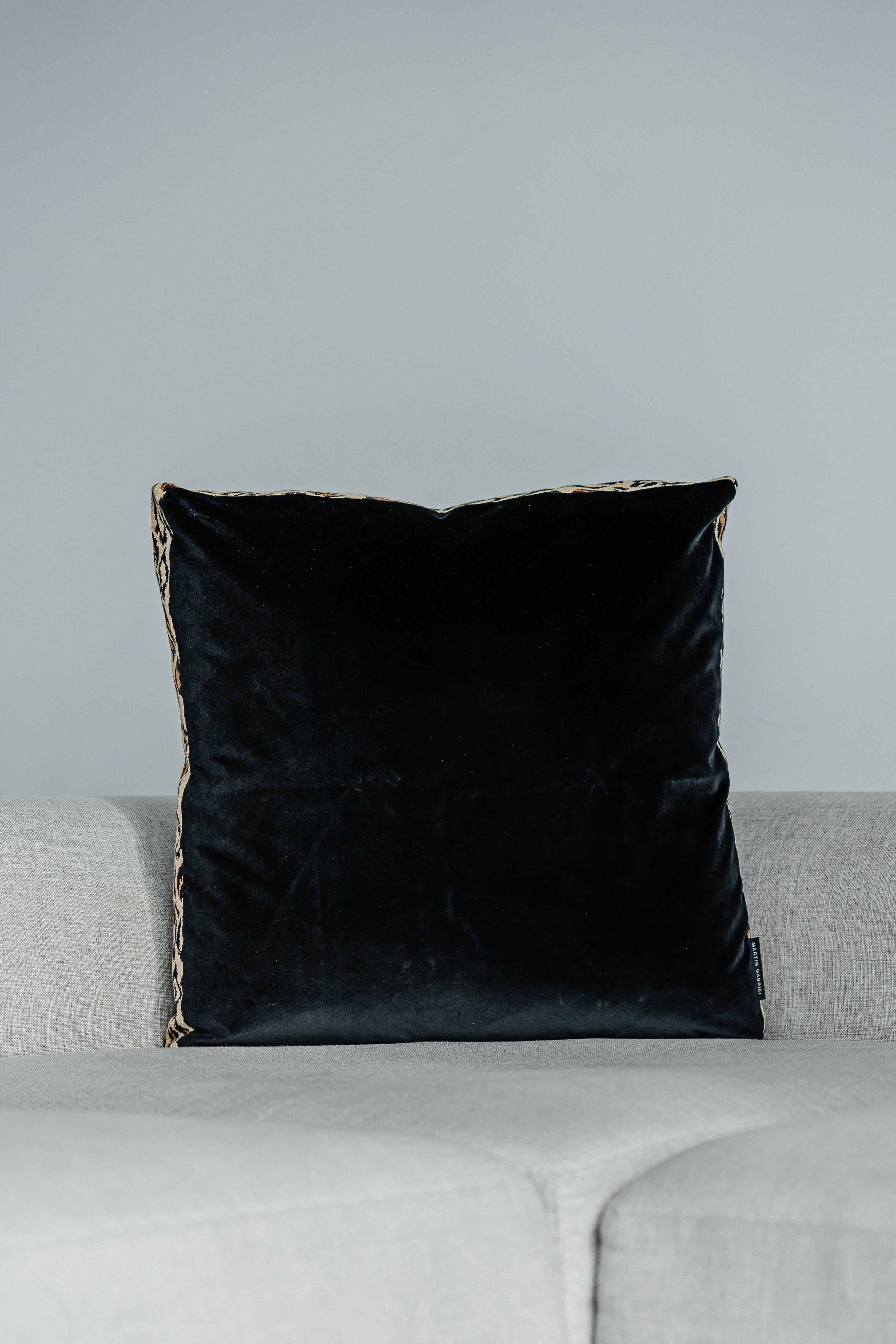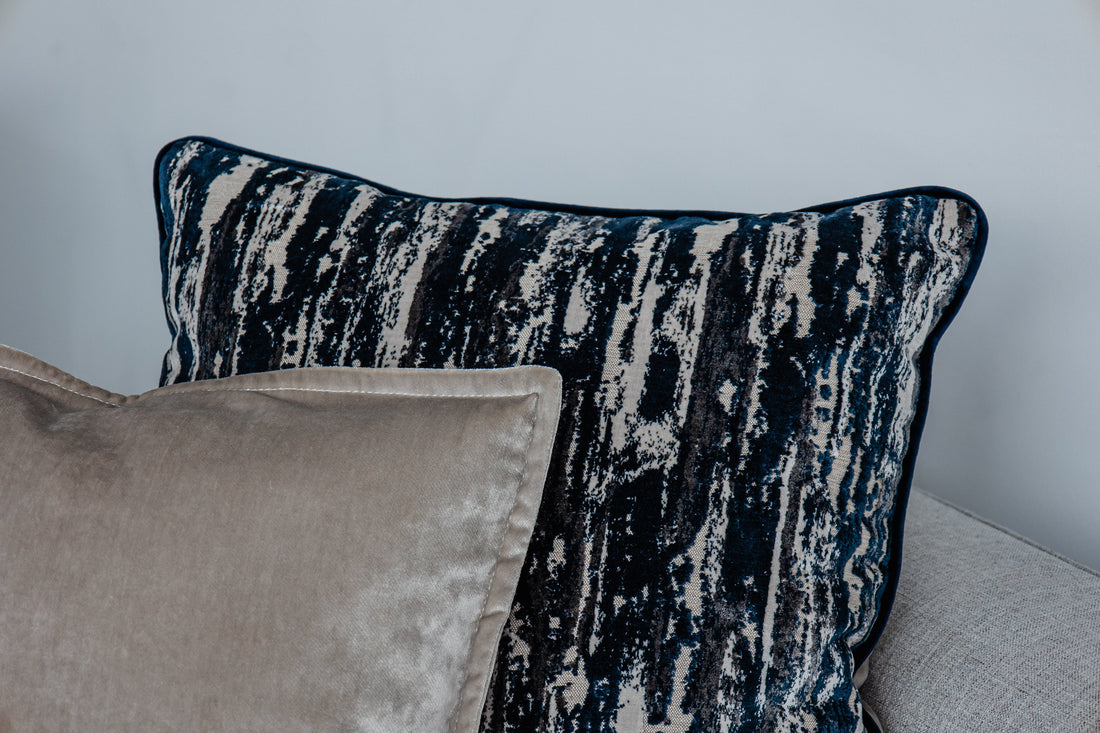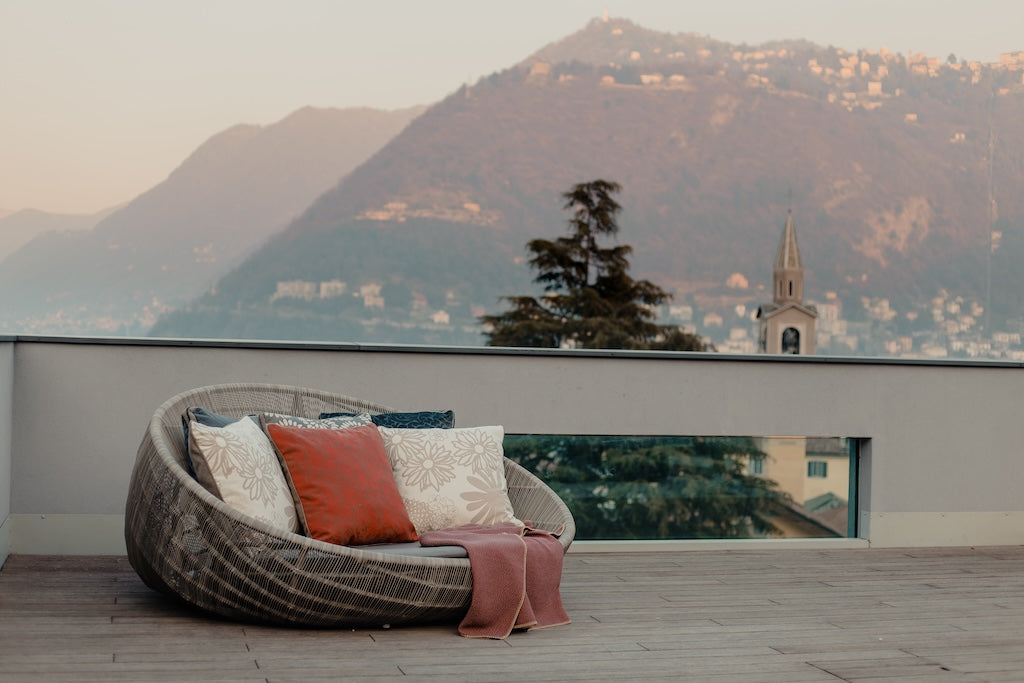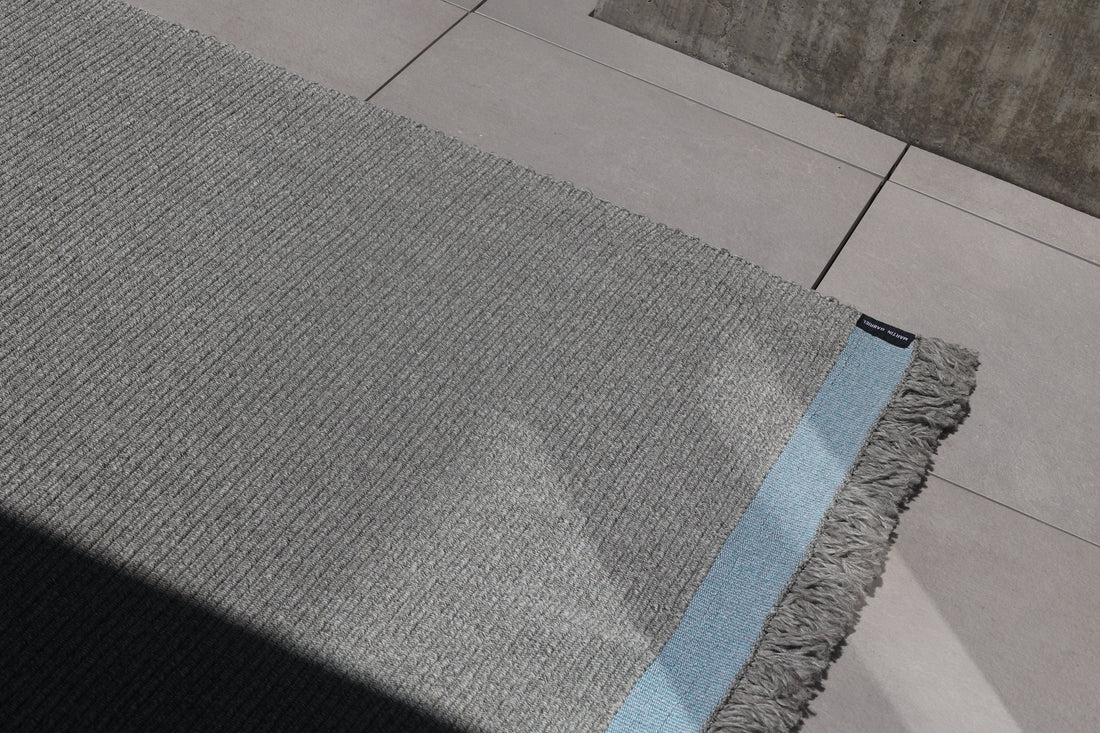Warm wood underfoot, a wall with fine clay plaster, a rug made of new wool that gently cushions footsteps. Spaces based on genuine raw materials appeal to all the senses. They invite rather than simply function. They age gracefully, make daylight seem more vibrant, and create a living environment that feels authentic.
When you plan your home with natural surfaces and textiles, you're not just choosing style. It's also about health, longevity, and the question of how we use resources. Above all, it creates atmosphere.
Why real raw materials are so convincing
Naturally grown materials carry information within them: growth rings in the board, fossil inclusions in the stone, irregular selvedges in the linen. These small deviations from perfection soothe the eye. They make spaces readable.
- Indoor climate: Wood, clay and cork buffer moisture and improve air quality.
- Acoustics: Fibrous surfaces absorb sound and reduce reverberation.
- Haptics: Surfaces that live under the hand promote relaxation.
- Durability: Repairable, re-maintainable surfaces develop a patina instead of wear.
- Ecology: Short delivery routes and certified origin reduce the footprint.
The power lies in the combination of sensuality and function. A room that sounds good, smells good, and looks good will automatically be used more often and more consciously.
Material portraits at a glance
Wood
No other material brings warmth into a room so quickly. Oak is robust and dimensionally stable, ash is light and vibrant, walnut is dark and tranquil. Pine and larch exude a fragrant fragrance, and Douglas fir exudes a Scandinavian sense of spaciousness.
- Use: Floors, furniture, wall paneling, ceiling moldings, kitchen fronts
- Surfaces: Hard wax oil for warm depth, soapy water for matt Scandinavian, varnish for heavy use
- Tips: Knotty grades tell stories. For quiet rooms, choose fine-grained wood.
Stone
From limestone to granite, from slate to terrazzo. Stone grounds, cools visually, and harmonizes beautifully with plants and wood.
- Use: kitchen worktops, window sills, bathrooms, skirting boards
- Properties: High compressive strength, storage for radiant heat, easy to maintain with proper impregnation
- Recommendation: In kitchens, denser varieties or well-impregnated limestone are better. In bathrooms, slip-resistant surfaces are better.
clay
Clay plaster is a champion indoor climate. It regulates humidity, absorbs odors, and creates a velvety light.
- Use: interior plaster, decorative surfaces, niches
- Effect: Diffusion-open, pleasantly matt, easy to repair
- Accent: Color pigments bring the wall to life without being loud.
cork
Slightly springy, warm, and sound-absorbing, cork is ideal when the barefoot feel is important.
- Use: Floors, pinboards, documents
- Appearance: From natural to oiled, in tiles or large-format planks
- Advantage: Antistatic, suitable for allergy sufferers.
Wool and other natural fibers
Virgin wool, jute, sisal, linen and hemp provide texture and comfort.
- Use: carpets, curtains, cushions, covers
- Benefits: Temperature balancing, acoustically strong, often self-cleaning due to natural fats
- Care: Air out regularly, brush gently, and use wool soap occasionally.
Rattan, bamboo and corkscrew willow
Weave brings transparency and lightness.
- Use: Chairs, lampshades, room dividers, baskets
- Impression: Airy, friendly, Mediterranean or Asian influenced
- Tip: Combine with solid wooden frames to ensure stability.
Metal and glass
Neither is organic, but indispensable when combined with natural materials. Metal provides structure, while glass adds light and depth.
- Metal: Brass warm and classic, stainless steel cool and precise, black steel graphic
- Glass: Clear edges or ribbed ornamental glass that provides privacy and distributes light
Design principles for a harmonious mix
A good material mix is based on balance. Three to five main materials are sufficient for an entire apartment.
- Balance contrasts: warm wood with cool stone, soft wool with smooth glass.
- Adjust the grain: Too many heavily grained surfaces create a restless effect. A stage, a solo, a choir.
- Plan for light: Northern light tolerates warm woods and cream white, while south-facing rooms can use cooler tones.
- Use repetition: The same type of wood in doors, shelves, and tabletops anchors the look.
A central principle is the hierarchy of touch. Surfaces that are frequently touched should have a pleasant feel. Wooden handles, oil-finished tables, and woolen cushions on the sofa make everyday life more pleasant.
Room by room
Living room
- Floor: Oiled oak or cork for warm acoustics
- Carpet: Coarsely woven new wool, optionally with cotton edge
- Walls: Clay plaster or mineral paint, plus a solid wood shelf
- Accents: rattan lamp, terracotta plants
A single, large piece of furniture made of solid wood creates a sense of calm. Better one good one than five mediocre ones.
Kitchen
- Fronts: wood veneer with vertical grain, handles made of solid walnut
- Worktop: Natural stone, stainless steel or robust hardwood with cutting board zones
- Floor: Hard parquet or cement tiles, depending on the household
- Splash guard: glazed clay or ribbed glass
The right edge saves nerves. Rounded profiles feel better and are more durable.
bathroom
- Wall: lime plaster with Tadelakt look, partial areas in natural stone
- Floor: Anti-slip slate or porcelain stoneware with natural stone appearance
- Textiles: Organic cotton towels, linen shower curtain with coating
- Furniture: Oiled teak or oak with good ventilation
Wood in the bathroom works if moisture can escape and surfaces are regularly maintained.
bedroom
- Floor: Cork or soft wood such as pine, preferably soaped
- Textiles: Linen bed linen, blackout wool blend curtains
- Walls: Lime paint in muted tones
- Extras: Headboard made of wooden slats, scent of Swiss stone pine only if you like it
Home office
- Table top: solid wood, at least 26 millimeters thick
- Acoustics: wool panels, jute curtains, cork board
- Order: baskets made of seagrass, cable sleeves in textile
- Light: Workplace light with warm white to neutral white setting
Hallway
- Floor: Easy-care natural stone or hard parquet with oil finish
- Storage space: wooden wall hooks, wicker bench
- Wall: Scrub-resistant clay or lime plaster
Evaluation table for material selection
| material | Haptics | Thermal impression | Acoustics | Care requirements | Suitable rooms | Price level | Relevant seals |
|---|---|---|---|---|---|---|---|
| oak | warm, dense | warm | medium | medium | Living room, bedroom, kitchen | medium | FSC, PEFC |
| walnut | silky, firm | warm | medium | medium | Living room, home office | high | FSC, PEFC |
| cork | springy, soft | warm | high | low | Bedroom, children's room, hallway | medium | FSC |
| slate | smooth, fine | cool | small amount | low | bathroom, kitchen, hallway | medium | Proof of origin |
| Lime plaster/clay | velvety, matte | neutral | high | low | All living spaces | medium | natureplus |
| Virgin wool | soft, voluminous | warm | very high | low | Living room, bedroom, office | medium | GOTS, RWS, organic |
| Linen | cool, grippy | neutral | medium | low | Bedroom, curtains | medium | GOTS, European Flax |
| rattan | light, elastic | warm | medium | low | Living room, winter garden | low | artisanal origin |
| Hard natural stone | cool, solid | cool | small amount | low | Kitchen, bathroom, hallway | high | Proof of origin |
Prices are approximate and may vary depending on quality and workmanship.
Procurement, quality and health
Origin makes all the difference. Short distances save energy and strengthen local businesses. Germany and Europe boast excellent timber companies and quarries.
- Certificates: FSC and PEFC for wood, GOTS and OEKO-TEX for textiles, natureplus for building materials
- Emissions: Choose low-VOC oils and varnishes, prefer low-solvent adhesives
- Recycling: Solid wood instead of coated chipboard, wool instead of synthetic fiber carpet, stone instead of composite material, where possible
- Second-hand: Refurbish solid wood furniture, grease leather thoroughly, re-powder coat metal frames
Those who work with craftsmanship often achieve better surfaces and repairability. A carpenter can precisely tailor edges, profiles, and oils to everyday use.
Color and light as partners
Natural surfaces react strongly to light. An oiled floorboard glows in backlight, while clay plaster softly diffuses sunlight. The choice of color enhances this effect.
- Warm-cold balance: Brass, terracotta, and oak warm rooms with natural light from the north. Stainless steel, slate, and light ash capture the southern sun.
- Shades of white: Pure white appears softer with limewash, cooler with acrylic paint. Pigments like titanium or zinc alter reflection.
- Oiled woods: White-pigmented oils brighten and visually enhance the rough grain. Natural oils deepen and emphasize the wood.
A common mistake is using too many slightly different shades of beige. It's better to choose two basic shades and use them consistently.
Care, repair and patina
Real materials are allowed to show their marks. With proper care, they remain beautiful and develop character.
- Wood:
- Wipe dry weekly, only damp with a damp cloth.
- Re-oil oiled surfaces every 1 to 2 years.
- Sand down scratches locally and rub in plenty of oil.
- Stone:
- Impregnate absorbent varieties.
- Use low-acid cleaners.
- Do not rub stains, but let them soak in and then remove them gently.
- Wool:
- Beat regularly instead of just vacuuming.
- Remove stains with cool water and wool soap.
- Have heavily used carpets professionally washed occasionally.
- Clay/Lime:
- Sweep away dust dry.
- Repair any damage with a fine filler and rub down.
Patina is not a defect. A cozy panel painting made up of small traces tells a story about life and takes away the fear of use.
Budget, priorities and smart compromises
Not every surface needs to be premium. What matters is where touch, sight, and load meet.
- Invest in: Floor in the main living room, dining table, worktop, mattress and textiles that have daily contact
- Save on: secondary surfaces, internal carcasses, shelves, rear edges
- Mix: Solid wood fronts combined with multiplex carcass, stone only as island, rest made of robust laminate in wood look
Those who plan the sequence wisely will realize the project in phases. First flooring and lighting, then large furniture, and later textiles and details.
An outlined implementation: 75 square meters sensibly renovated
Starting point: an old building with floorboards, high ceilings, and a small bathroom. The goal: a quiet, bright home with authentic finishes.
- Floor: Refurbish floorboards, apply a thin coat of white oil, partially close joints
- Walls: Clay plaster in living room and bedroom, lime paint in hallway and kitchen
- Kitchen: Birch plywood fronts with oak veneer, light granite worktop, ceramic sink
- Bathroom: slate floor, lime plaster with Tadelakt in wet area, oak vanity unit with hard wax oil
- Textiles: Linen curtains, wool carpet in the living room, stonewashed linen bed linen
- Lighting: Rattan for diffused light, directional light in black steel
Acoustics noticeably improve, and the indoor climate becomes more stable. The apartment feels lighter without being cold. A solid wood shelf with an open weave supports books and breaks up the wall.
Common mistakes and how to avoid them
- Too many materials: discipline in the mix, clear main actors.
- Incorrect surface treatment: oil instead of thick varnish where repairs are foreseeable.
- Neglected bases and edges: High-quality details protect and frame the surface.
- Underestimated acoustics: Plan carpets, curtains and panels early.
- Cheap fittings: Good hinges and drawer slides significantly extend the lifespan of wooden fronts.
A sample case with real, scaled samples helps. Nothing can replace touching, viewing in daylight, and examining things side by side.
Circular thinking in everyday life
Materiality doesn't end with purchase. Repair, repurposing, and resale are also part of it.
- Planning modular furniture, screw connections instead of gluing
- Prefer removable covers, keep spare parts
- Buy oils and cleaners in small containers and process them fresh
- Use leftover pieces as cutting boards, shelves, hook rails
Treating materials as building blocks of a long life cycle saves money and resources.
A quick guide to getting started
- Identify three main materials and obtain samples
- Conduct light analysis, align white tone and oil finish accordingly
- Clarify acoustic requirements, dimension textile surfaces
- Check certificates, compare dealers and tradespeople
- Write down a care concept, intervals for oil, impregnation, washing
- Focus budget on touchpoints
- Create a rehearsal room: completely implement a small area and gain experience
A home made from real raw materials not only feels good, it also has a welcoming feel, ages beautifully, and remains malleable. This is precisely what makes it so attractive to people who think long-term and enjoy living well.




